"If we do not take Maykop and Grozny, I will have to end this war," Hitler told his commanders in late July 1942. A hellishly difficult task was entrusted to the soldiers of the Brandenburg unit - an elite unit in no way inferior to the American Rangers or British commandos.
The German army has just captured Rostov-on-Don, the city that is the key to further attacking the Caucasus. After this success, under the order of the Führer, the 17th Army was to attack Batumi, and the 1st and 4th Panzer Armies towards the oil-bearing areas of Grozny and Maykop. At the head of these troops there was a separate unit from the Brandenburg special unit. The German commandos were also to carry out long-range subversive operations in the rear of the Red Army.
Builders for special tasks
Lehr Regiment Brandenburg z.b.V 800 (training and construction regiment for special purpose No. 800) was established on the basis of the Ebbinghaus Battalion under the Abwehr. The name Brandenburg came from the town where the headquarters of German specialists were located. Initially operating in company power, by August 1941 it had grown to the size of a regiment.
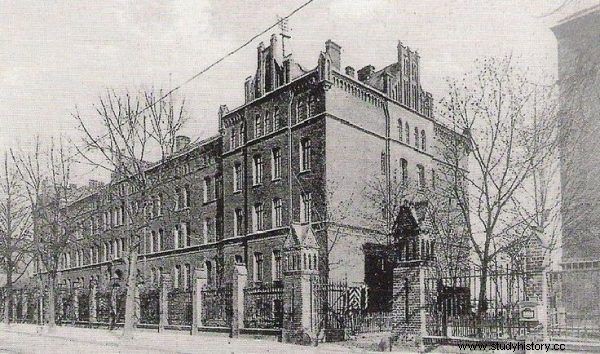
The original barracks of the "Brandenburg" unit established on December 15, 1939. Photo public domain.
The soldiers were recruited not only from Germans, but also from citizens of the Baltic states, the Soviet Union, Anglo-Saxons, Volksdeutsche from Slavic countries, volunteers from Arab countries, Iran, Afghanistan and even Indians. There were also the French, Belgians, Dutch, Finns, Swedes, Norwegians, Romanians and Hungarians.
The basic condition for admission to the unit was knowledge of at least one foreign language and secondary or higher education . The soldiers were trained in irregular and partisan activities. They were taught to use their own and opponent's weapons, drive various vehicles, hand-to-hand combat, horseback riding, piloting light airplanes, parachuting, using means of communication, and using explosives. A specialized company was even created to operate in the harsh winter conditions in the far north of the USSR.
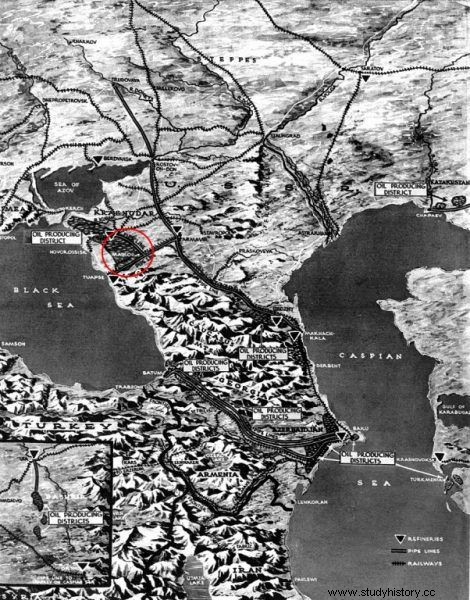
Maykop on the map of the Caucasus (click to enlarge). Photo public domain.
We have to get Soviet oil
One of the goals of the German attack in the Maykop region was to capture intact oil installations. A special unit of 86 Brandenburgers was assigned to this task.
The rally itself was divided into two operations. A smaller detachment of 24 people, commanded by 2nd Lt. Ernst Prochaske, had to capture the bridge on the Belaya River just outside the city. Tanks of the 13th Panzer Division were to pass after it and capture Maykop and its oil-bearing surroundings, previously secured by the unit of 2nd Lt. Adrian von Fölkersam.

Training binge
Von Fölkersam's saboteurs were preparing for action in a center in East Prussia. The German commander decided to take advantage of the fear of the NKVD common among the regular units of the Red Army and to dress his soldiers in the uniforms of this formation.
The outfit didn't do the trick, however. German soldiers were to be transformed into every inch Chekist. This task was made easier because they were all Baltic Germans and spoke perfect Russian. The commander himself was the grandson of the tsarist admiral during the war with Japan in 1905
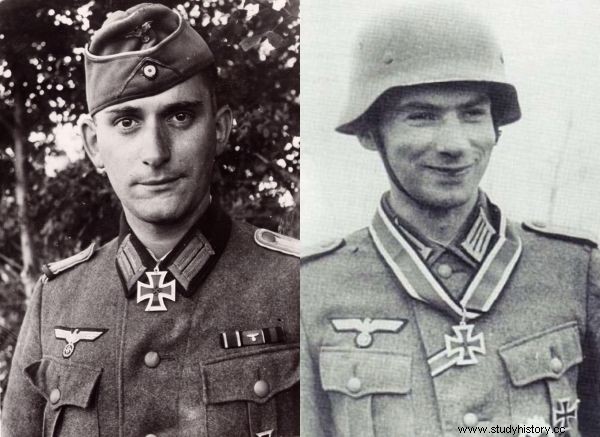
Ernst Prochaske (left) and Adrian von Fölkersam. Photo public domain.
The training covered every detail of "being a chekist." The Germans paraded in Soviet uniforms. They learned how to use Soviet weapons. Much emphasis was placed on learning the specific Chekist jargon and the ability to use it in relation to equals and to senior officers. In the Soviet reality, the NKVD was the master of life and death, and the Brandenburgians also had to develop a habit of brutality in their contacts with rank-and-file soldiers. The crowning achievement of science were the attempts to drink large amounts of vodka in order to get the German saboteurs to get used to it.
The fake Chekists are in action
The von Fölkersam unit penetrated the front line near Aleksandrowsk on August 2, 1942. The Wehrmacht tanks were to be launched seven days later. The Brandenburgers were driving captured Soviet trucks. They put on the uniforms of the NKVD on their uniforms. The German commander himself acted as Major Truchin.
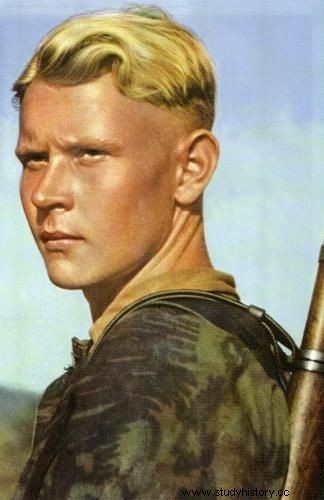
It was not possible to send a "typical" soldier of the German armed forces on this mission ... (photo:public domain).
In one of the villages they encountered, the Germans encountered Cossack and Ukrainian deserters from the Red Army. Von Fölkersam seized the opportunity perfectly and played a strict and imperious NKVD. He ordered everyone to be arrested and broken down by nationality. The Cossacks, escorted, were led away some distance. There, an execution was faked and they were persuaded to go over to the German side.
The Ukrainians, left "alive", were loaded onto a truck. They were to be shipped back to Maykop, where they thought something worse than being shot was waiting for them.
For the goodness of goods
Upon their arrival in Maykop, Major Truchin and his fake Chekists reported to the headquarters of the local NKVD. The news of the execution of the Cossacks preceded von Fölkersam. Germany was warmly welcomed by the NKVD. They were allocated quarters, responsibilities were allocated, and they were invited to a formal reception for the evening.
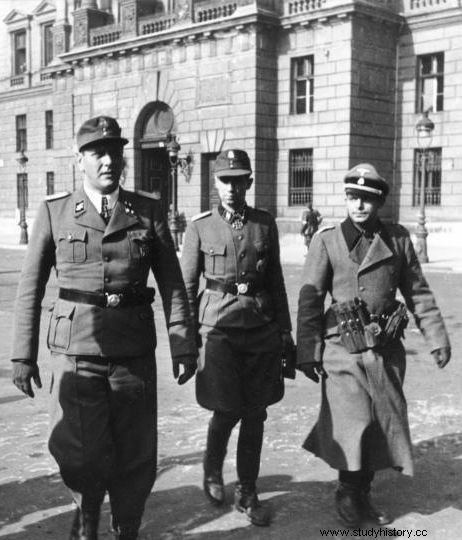
Adrian von Fölkersam (right) together with Otto Skorzeny. Budapest 1944 (photo:Bundesarchiv, Bild 101I-680-8283A-30A / CC-BY-SA).
For the next few days, von Fölkersam, accompanied by a Soviet general, traveled around Soviet defensive positions. His soldiers also learned about the hotspots of the local military infrastructure.
On the eve of the German attack on Maykop, planned for August 8, 1942, the German commandos were divided into three groups. The first was to paralyze Soviet communications on the front line. The second to take over the telephone exchange of the Soviet command in the city and spread false information. The task of the third group was to prevent the destruction of the mining infrastructure.
Everyone in position!
Shortly after dark, the first unit marched towards the front line. At that time, you could hear the cannonade of German artillery shelling Soviet positions. The Brandenburgers captured and blew up the field communication center of the Soviet military command. Thus, telephone communication between the Soviet command and the troops was interrupted.
The chaos in the ranks of the Soviet troops was even more aggravated after a second group of saboteurs seized the telephone exchange. The Germans provided "official" information about the imminent evacuation of the city to each Soviet unit that volunteered.

And it was all about oil, of course ... A still from the German newsreel (photo:public domain).
The third group also managed to complete their task. She took over and secured the oil equipment against blowing up. The Soviets managed to destroy only one object. In addition, the Germans also acquired large reserves of crude oil.
Blow off comrades where pepper grows!
As the German tanks were already attacking the city, von Fölkersam placed some of his soldiers at the central point of resistance. According to the procedure followed by the NKVD, the fake Chekists were to act as a barrier unit and execute Soviet soldiers trying to withdraw.
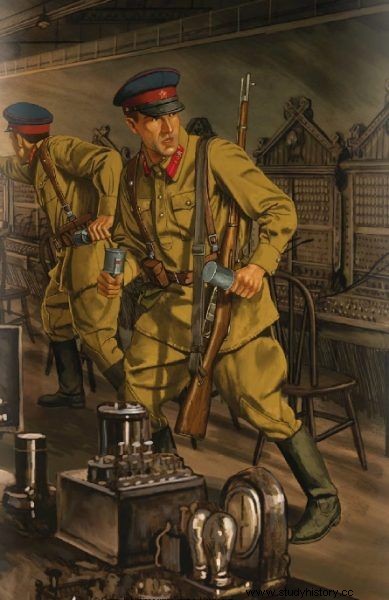
German saboteurs in Maykop. Excerpt from the book "Behind Soviet Lines" by David R. Higgins (Osprey series).
In the meantime, the bridge over the Biełaja River was attacked by sub-Lt. Prochaski. Despite the fact that the officer in charge of the attack was mortally wounded, the Germans managed to take control of this important object and secure it from blowing up. After him, German tanks and the infantry supporting them fell on the city.
At a critical moment in the German attack, Major Truchin first ordered the Soviet anti-tank unit to retreat, preparing an ambush for German tanks, and then to infantry units. The Soviets began to flee in panic. The Soviet commissioners were unable to contain the panic fueled by the shouts of “Tanki! Tanki! " German saboteurs.
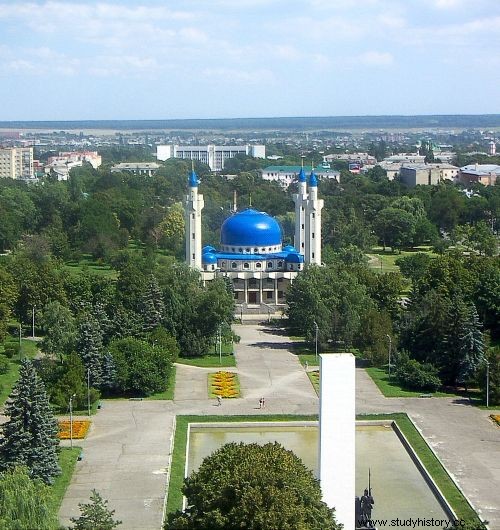
Maykop in contemporary photography (photo:Kefoss, CC BY-SA 3.0).
On August 9, 1942, German troops entered Maykop. The immediate occupation of the city was largely due to the soldiers of the Brandenburg regiment.
As the commander of the 13th Panzer Division stated, their actions saved his unit at least four days of fighting. In recognition of the merits of 2nd Lt. Ernst Prochaska (posthumously) and 2nd Lt. Adrian von Fölkersam were awarded the Knight's Crosses of the Iron Cross.
